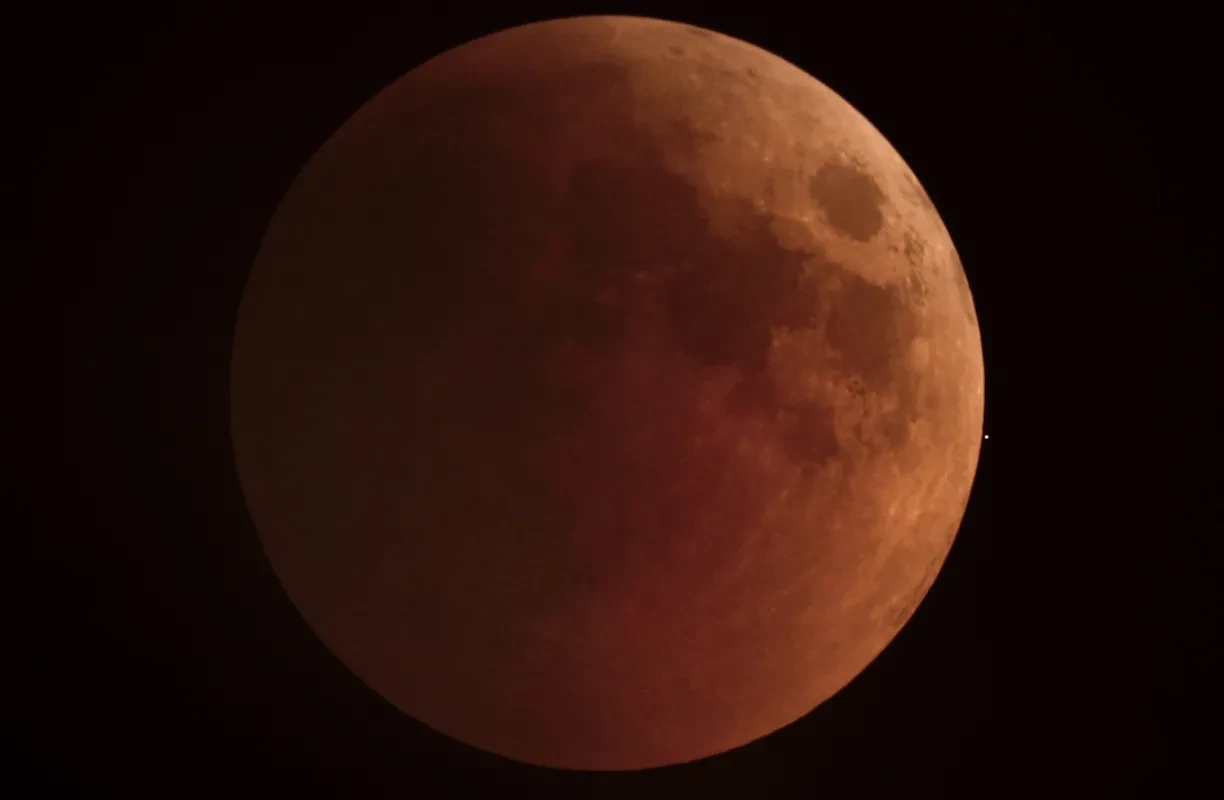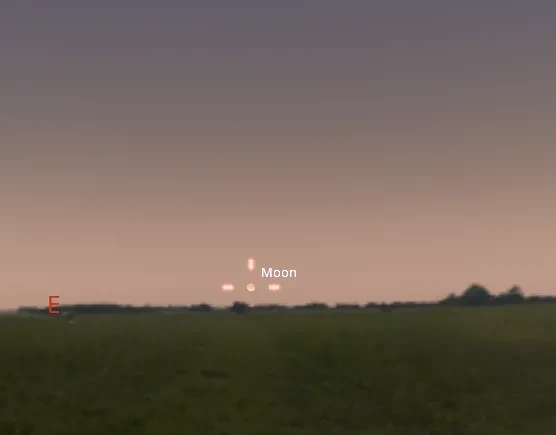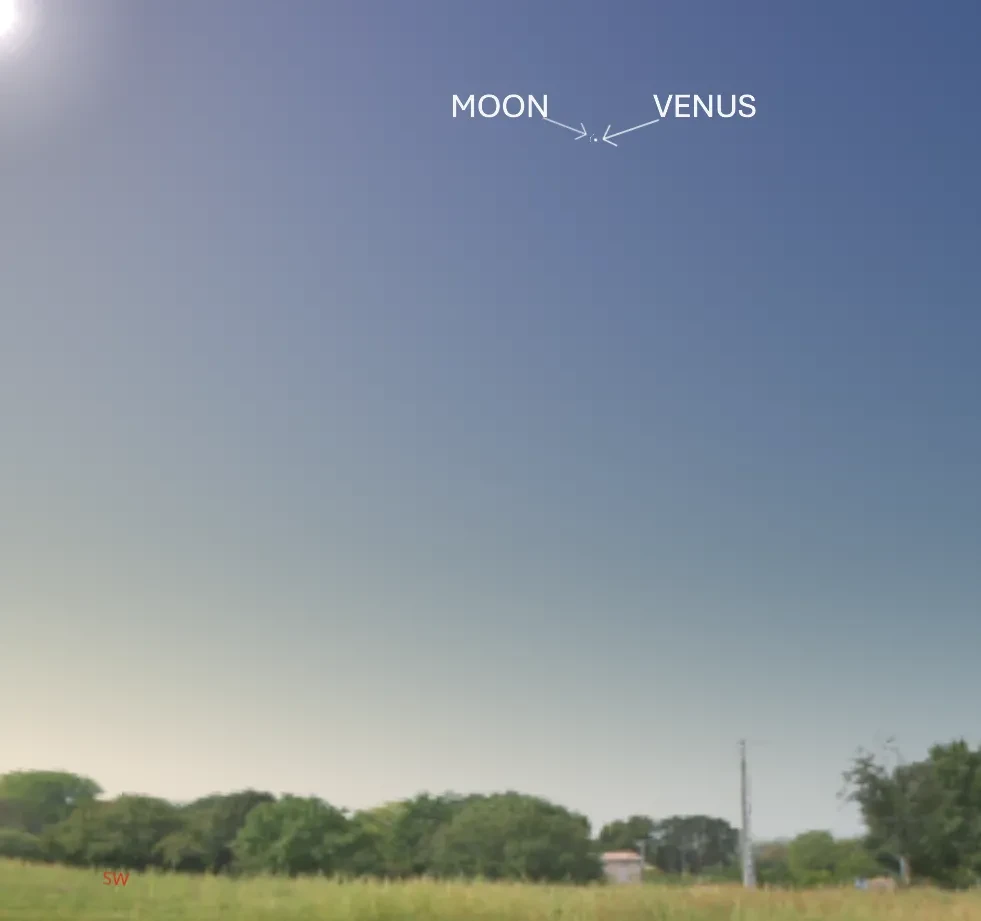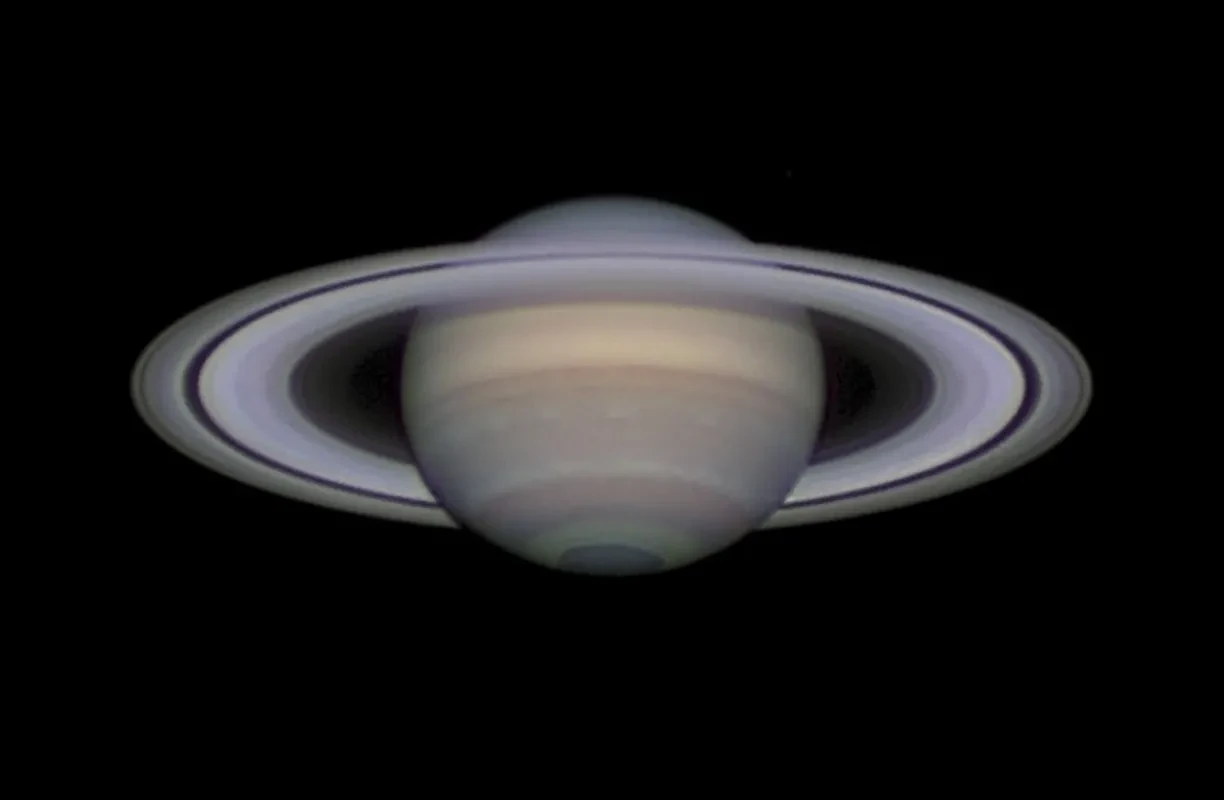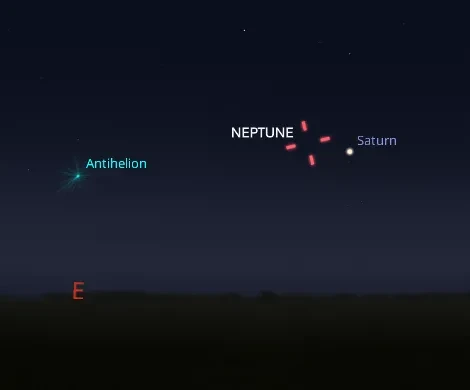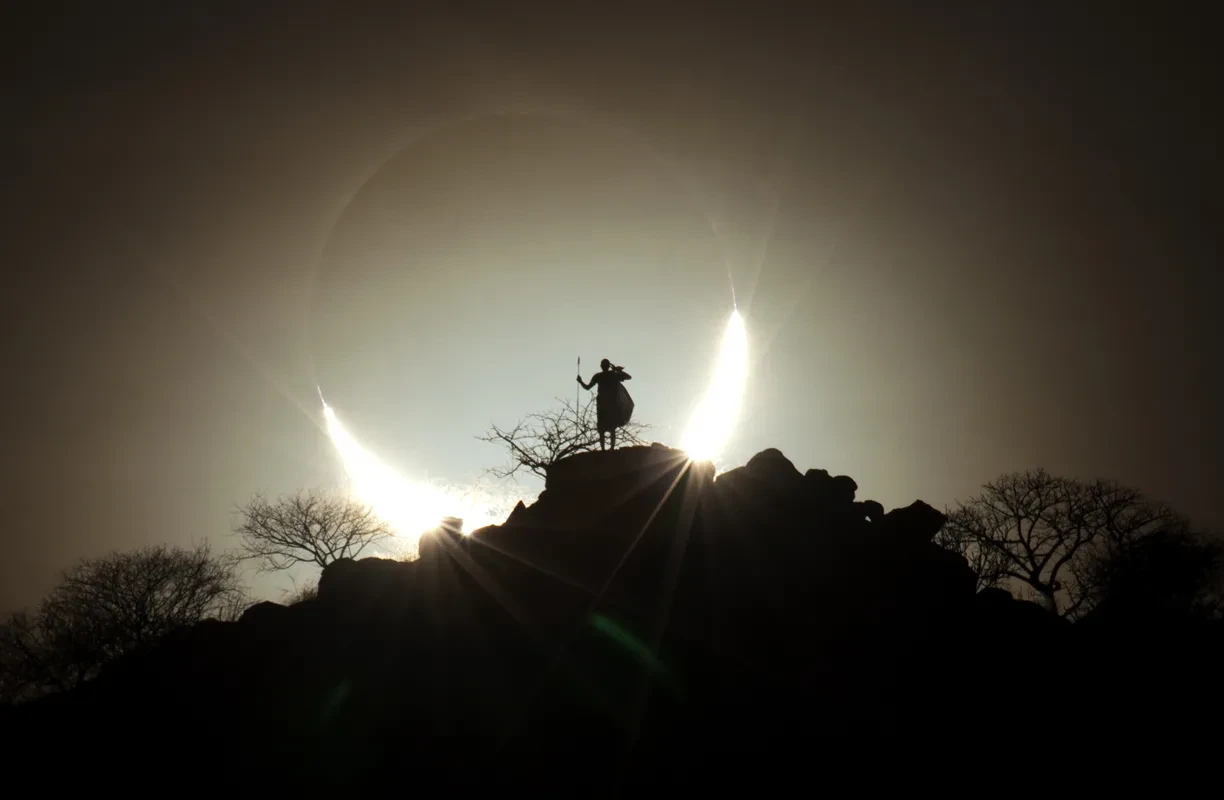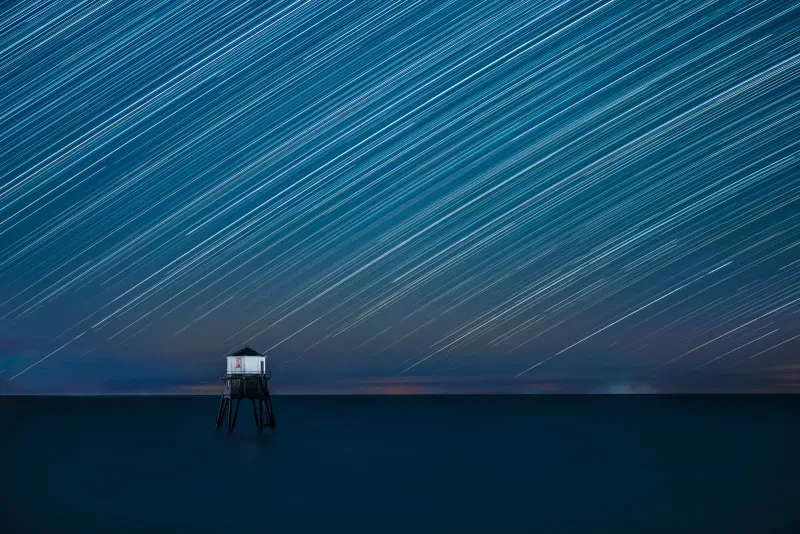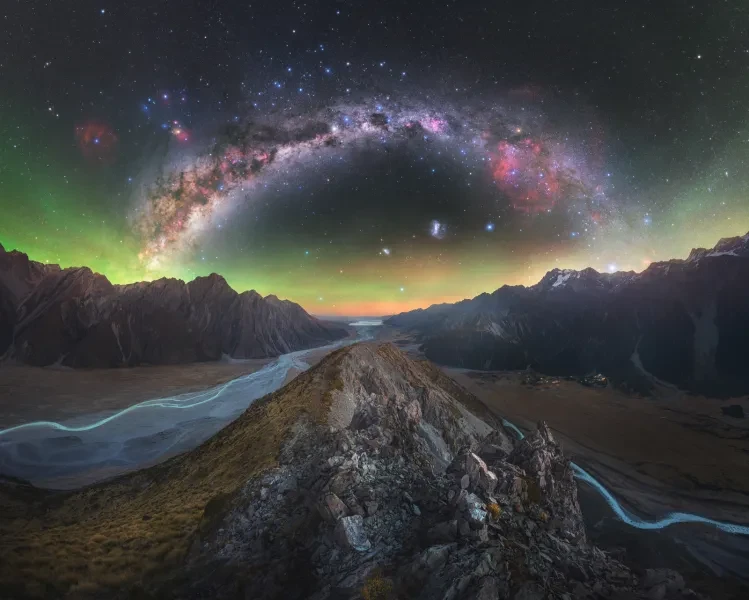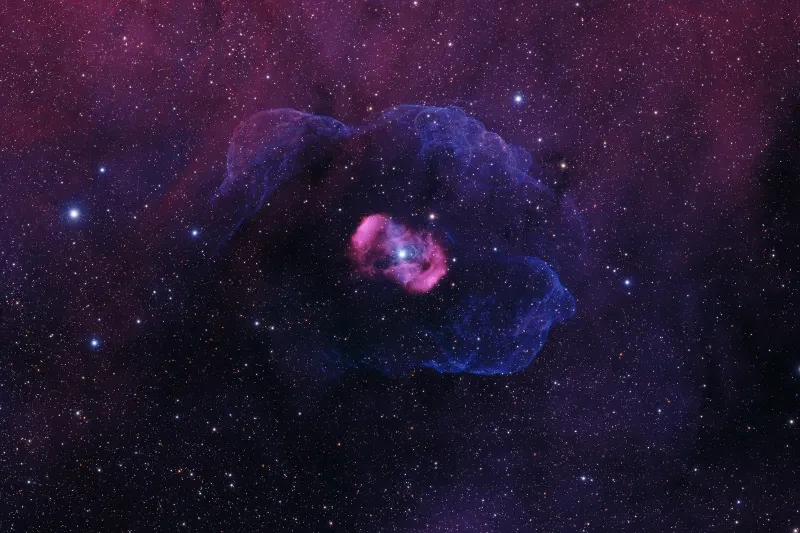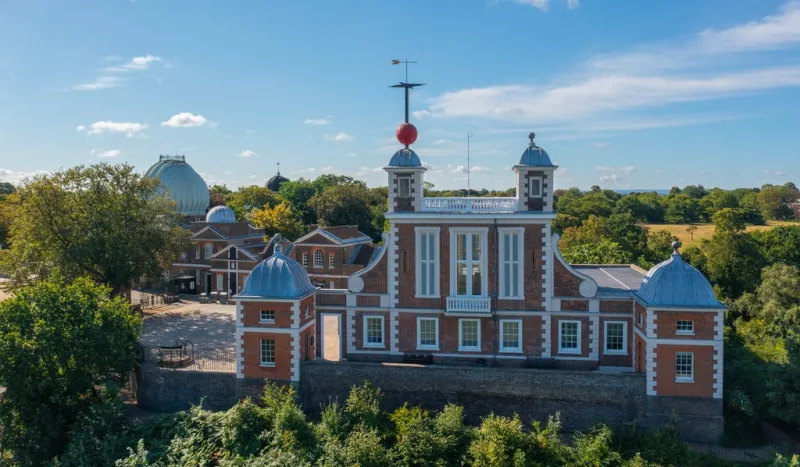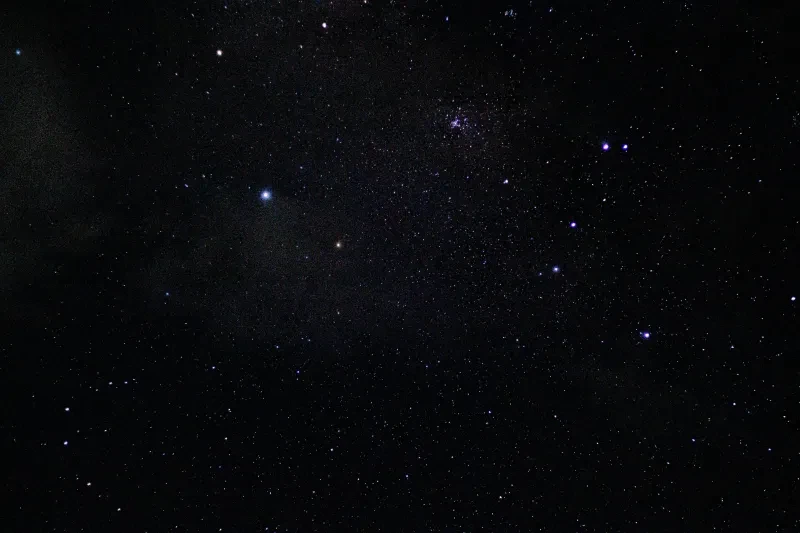
Explore what you can see in the night sky this September, including a total lunar eclipse, the Moon passing in front of Venus, and more!
Top 3 things to see in the night sky in September 2025:
- 7 September - Don't miss the blood moon!
- 19 September - The Moon blocks out Venus
- 21 September - See Saturn at its best
Details given are for London and may vary for other parts of the UK.
By Angelina, work experience student.
Look Up! Podcast
Royal Observatory Greenwich astronomers Imo and Catherine talk through some of this month’s must-see cosmic objects in this podcast. Also discussed are this month’s cosmic news stories, the discovery of a new moon around Uranus, and the appointment of the 16th Astronomer Royal, Professor Michele Dougherty!
Total lunar eclipse
A total lunar eclipse will be visible from London with the naked eye on 7 September - this is also known as a 'blood moon', and is the second lunar eclipse of the year. The eclipse's maximum will be at around 7.33 pm.
The Moon will be located towards the east of the horizon, appearing a reddish colour - hence why it's called a blood moon. To observe this eclipse, find a high point with an unobstructed view, as the Moon will appear very low on the horizon.
A total lunar eclipse occurs when Earth passes directly between the Sun and the Moon and they all align. The Moon will lie in the darkest part of Earth's shadow, called the umbra, which blocks all direct sunlight from reaching the Moon.
The red hue is due to the light reaching the Moon's surface being refracted and filtered by the Earth's atmosphere. Shorter wavelengths of light (like blue and violet) are scattered more efficiently by the molecules, and the longer wavelengths (like red) scatter less and are refracted towards the Moon, then reflected off the Moon's surface.
Lunar occultation of Venus
On 19 September, Venus will be occulted by the crescent-shaped Moon. Occultation occurs when one celestial object appears to pass in front of another from our vantage point on Earth. In this case, Venus and the Moon's orbits intersect, which causes an alignment.
From London this occultation will occur at around 12.55 pm, with Venus disappearing behind the Moon for around an hour and reappearing at 2.14 pm. Clear skies are crucial, and this is best viewed with binoculars or a telescope. However, you must be extremely cautious using these instruments when the Sun is above the horizon.
Planets at opposition
Saturn will reach opposition on 21 September, marking its closest point to Earth and its brightest appearance for the year. During opposition, the Sun, Earth and Saturn align, meaning Saturn will be visible opposite the Sun in the sky, fully illuminated.
This event will make Saturn easily visible to the naked eye, appearing as pale yellow and rising in the east, located in the constellation of Pisces. However, Saturn's beautiful rings won't be fully visible due to Saturn's rotation turning edge-on to us, so unfortunately the rings will appear very narrow.
For fans of Neptune, it will be at opposition on 23 September. The planet will be visible with a telescope, rising in the east and setting in the west at sunrise - it's an exciting month for the gas planets! Neptune, the farthest planet in our Solar System at 4.3 billion kilometres away, will be at its closest point to Earth, shining blue and brighter than any other time of the year. Even with an optical aid, Neptune appears faint and you'll need a high magnification to get a clear view.
The Northern Hemisphere's autumn begins
22 September is the autumnal equinox, marking the beginning of autumn in the Northern Hemisphere. From this day, nights will become longer and days will become shorter - perfect for stargazing! On this day the Sun crosses the equator, and day and night will be of equal length.
The Summer Triangle
As summer comes to an end, make sure to keep an eye out for the summer constellations shining brightly in our night sky. The Summer Triangle is an asterism formed from the three stars Vega, Deneb and Altair, and will remain visible in the southern sky after sunset as three bright points in a triangle shape.
Vega, the brightest of the stars, is a part of the constellation Lyra, which is roughly the size of a fist held at arm's length.
Deneb can be found to the left of Vega and is a part of Cygnus (known as the swan constellation) and is often referred to as the 'northern cross', as the brightest stars form a cross shape with Deneb at the top.
Finally, Altair is a part of Aquila, the eagle constellation, which looks like an arrow head.
Southern Hemisphere observing
For readers in the South Pacific, the 21st is your lucky day as a partial solar eclipse will be visible. This will begin at sunset, with the maximum eclipse occurring around 7.41pm UTC, when around 85% of the Sun will be obscured by the Moon, creating a crescent shape.
A solar eclipse always occurs about two weeks before or after a lunar eclipse, so September is an active period for eclipse cycles. Please remember that when observing this solar eclipse appropriate eye protection must be worn.
The Moon's phases in September 2025
Full moon: 7 September (18:09)
Total lunar eclipse: during this full Moon the Earth's shadow will fall over the Moon
Last quarter: 14 September (10:33)
New moon: 21 September (19:54)
Partial solar eclipse: during this new Moon, the Moon will pass partially in front of the Sun, visible for those in the South Pacific
First quarter: 29 September (23:54)
Stargazing tips
- When looking at faint objects such as stars, nebulae, the Milky Way and other galaxies, it is important to allow your eyes to adapt to the dark so that you can achieve better night vision.
- Allow 15 minutes for your eyes to become sensitive in the dark and remember not to look at your mobile phone or any other bright device when stargazing.
- If you're using a star app on your phone, switch on the red night vision mode.
More space and astronomy
Header image: Passage of a Lunar Eclipse © Mike White, shortlisted in Astronomy Photographer of the Year 2023
